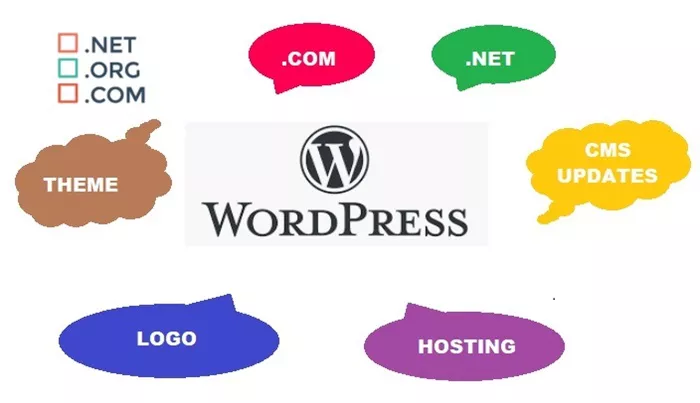A slow website can lead to a higher bounce rate, reduced traffic, and even penalties from search engines. For optimal user experience and SEO benefits, aim for a page load time of under two seconds. This guide presents 10 effective steps to boost your WordPress website’s performance.
How to Check Your Website’s Speed
Your website’s speed may appear fine due to cached pages in your browser, but new visitors may experience delays. To test load times and identify potential issues, use the following tools:
- GTmetrix
- YSlow
- Google PageSpeed Insights
- Pingdom
Test your site before and after optimization to measure improvements. Ideally, aim for a load time of under two seconds.
1. Choose a Quality Hosting Provider
A slow server directly impacts your website’s speed. Selecting a hosting provider that prioritizes performance is the first step in improving load times. Providers like SiteGround offer SSD hardware, caching tools, and free CDN services to ensure fast performance.
2. Optimize Your Theme
Overloaded themes with numerous features can slow down both your server and browser. Opt for lightweight, well-coded themes like WordPress’s default options or performance-focused themes such as Astra and GeneratePress. A responsive design ensures smooth loading across desktop and mobile devices, improving SEO and user experience.
3. Monitor Your Plugins
Excessive plugins can degrade your site’s performance. Install only essential plugins and thoroughly research them before installation. Regularly update plugins to ensure you’re using the most efficient and secure versions. Avoid plugins that are poorly rated or not compatible with the latest WordPress version.
4. Optimize Your Widgets
Widgets that load external resources, such as JavaScript or CSS from social media sites (e.g., Facebook, Twitter), can increase loading times. For widgets that don’t require frequent updates, consider uploading them directly to your server to minimize reliance on external servers.
5. Optimize Static Content
Static files like CSS, JavaScript, and HTML can be compressed using gzip to reduce file sizes and speed up loading. Enable gzip compression via your cPanel or use a caching plugin like W3 Total Cache. Additionally, using a Content Delivery Network (CDN) ensures static files are served from servers closer to your users, improving load times.
6. Optimize Images
Since images contribute to more than 65% of a page’s size, optimizing them is vital for faster loading. Here’s how to do it:
Set Maximum Dimensions: Ensure images are not oversized.
Lossless Compression: Use tools like Smush or reSmush.it to reduce image sizes without sacrificing quality.
Lazy Loading: Load images only when they appear on the screen, reducing initial load time.
Select the Right Format: Use lightweight formats like SVG for simple graphics.
CSS Sprites: Combine multiple small images into one to minimize HTTP requests.
7. Optimize Your Database
Over time, your WordPress database accumulates unnecessary data, which can slow down performance. Regularly clean your database using tools like phpMyAdmin or plugins like WP-Optimize to remove redundant data and improve site speed.
8. Use Caching for High-Traffic Sites
Caching is critical for high-traffic websites. Without caching, WordPress must dynamically generate a page each time it’s requested, which can be slow. Caching stores static HTML files for faster subsequent loads. Use plugins like W3 Total Cache to enable caching and speed up your site.
9. Perform Regular WordPress Maintenance
Routine maintenance is essential for keeping your site optimized. Ensure your WordPress core, themes, and plugins are up to date. Regularly remove outdated content, clear post revisions, and delete spam comments to prevent unnecessary bloat that can slow down your site.
10. Use Performance Plugins
Several plugins are available to automate optimization tasks and enhance performance. Some essential plugins include:
W3 Total Cache: A caching plugin that enhances page speed by caching content and compressing files.
WP-Optimize: Cleans and optimizes your database for improved performance.
Autoptimize: Minifies and compresses HTML, CSS, and JavaScript files to streamline your website’s structure.
WP Smush: Compresses images without losing quality, reducing page load time.
Lazy Load: Loads images only when they appear in the user’s viewport, speeding up initial load time.
Additional Tips for Performance
Empty the Trash: Regularly clear deleted items from the trash to reduce unnecessary database load.
Minify JavaScript and CSS: Remove extra characters from your code to reduce file sizes and improve load time.
Disable Pingbacks and Trackbacks: These features can consume server resources, so disabling them can improve performance.
Conclusion
Optimizing your website’s speed is crucial for improving user experience, SEO, and retention. By following these 10 steps, you can significantly enhance your WordPress site’s performance and deliver a faster, smoother browsing experience for your visitors. Regular monitoring and optimization are essential for maintaining peak performance.
For reliable hosting, we recommend SiteGround, which provides advanced performance tools like caching, CDN integration, and detailed optimization guides to help you achieve faster load times on your WordPress site.
Related Topics
- Fixing 402, 403, 404 & 500 WordPress Errors
- WordPress Admin Themes Take Shape with CSS Custom Properties
- WordPress.com Launches AI-Powered Free Website Builder

